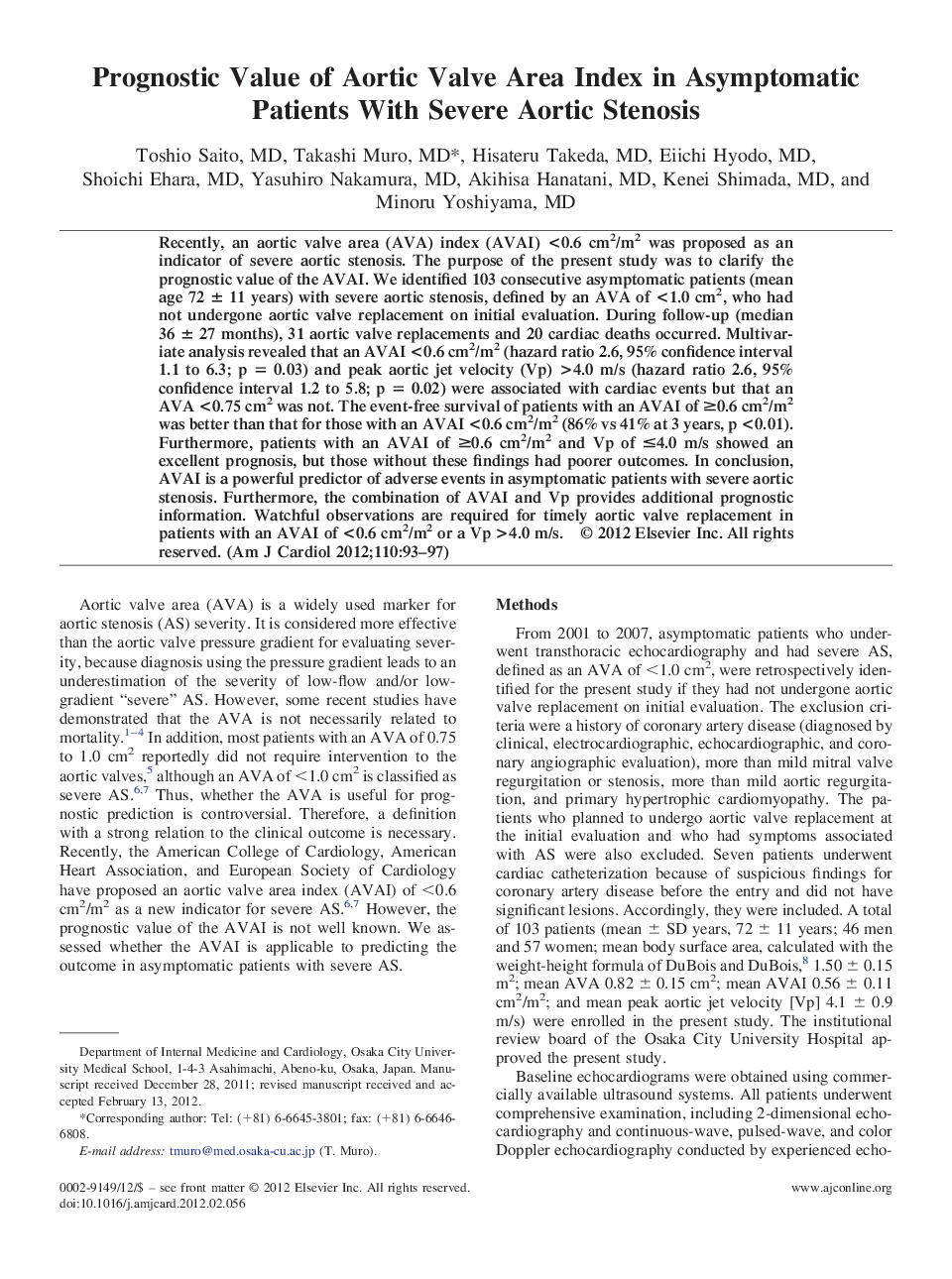| Article ID | Journal | Published Year | Pages | File Type |
|---|---|---|---|---|
| 2855662 | The American Journal of Cardiology | 2012 | 5 Pages |
Recently, an aortic valve area (AVA) index (AVAI) <0.6 cm2/m2 was proposed as an indicator of severe aortic stenosis. The purpose of the present study was to clarify the prognostic value of the AVAI. We identified 103 consecutive asymptomatic patients (mean age 72 ± 11 years) with severe aortic stenosis, defined by an AVA of <1.0 cm2, who had not undergone aortic valve replacement on initial evaluation. During follow-up (median 36 ± 27 months), 31 aortic valve replacements and 20 cardiac deaths occurred. Multivariate analysis revealed that an AVAI <0.6 cm2/m2 (hazard ratio 2.6, 95% confidence interval 1.1 to 6.3; p = 0.03) and peak aortic jet velocity (Vp) >4.0 m/s (hazard ratio 2.6, 95% confidence interval 1.2 to 5.8; p = 0.02) were associated with cardiac events but that an AVA <0.75 cm2 was not. The event-free survival of patients with an AVAI of ≥0.6 cm2/m2 was better than that for those with an AVAI <0.6 cm2/m2 (86% vs 41% at 3 years, p <0.01). Furthermore, patients with an AVAI of ≥0.6 cm2/m2 and Vp of ≤4.0 m/s showed an excellent prognosis, but those without these findings had poorer outcomes. In conclusion, AVAI is a powerful predictor of adverse events in asymptomatic patients with severe aortic stenosis. Furthermore, the combination of AVAI and Vp provides additional prognostic information. Watchful observations are required for timely aortic valve replacement in patients with an AVAI of <0.6 cm2/m2 or a Vp >4.0 m/s.
